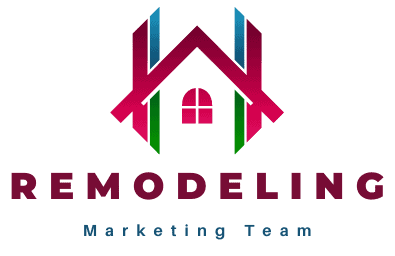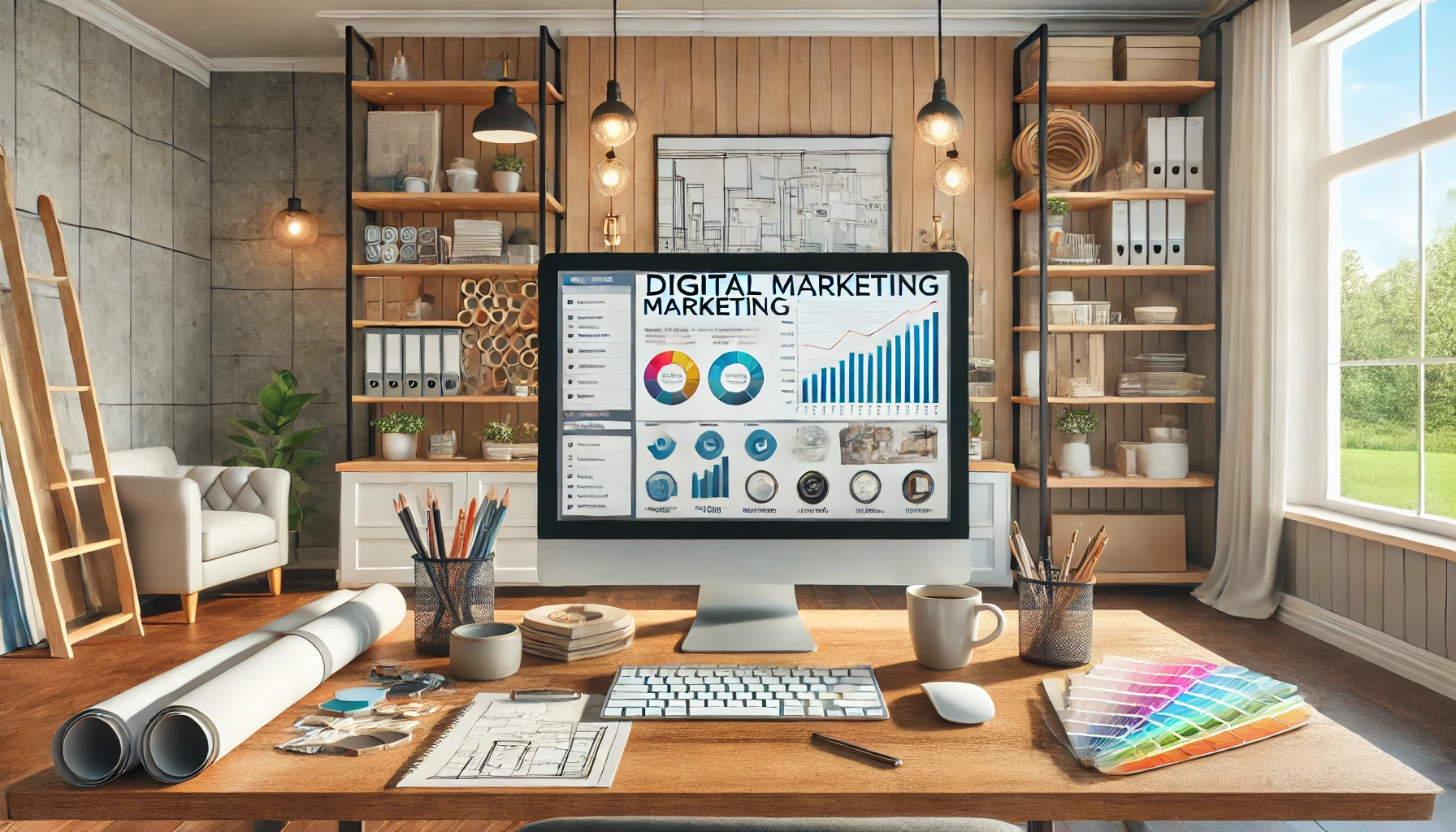Introduction
In today’s digital landscape, every remodeling contractor faces the same challenge: how to stand out in an ever-crowded market. Are you using the right online strategies to capture attention, attract quality clients, and keep them coming back? If you’re still relying on just a website or the occasional social media post, you may be leaving thousands of dollars in potential revenue on the table. Imagine transforming your online presence into a powerful, lead-generating machine that works for you around the clock—this playbook will show you exactly how. Follow along as we dive into the digital strategies that helped Dave, a remodeling contractor just like you, build a unified system that boosted his visibility and doubled his leads. Curious how he did it? Let’s get started.
Key Takeaways:
- Build a Strong Digital Foundation
- A professional, well-optimized website is essential for any remodeling contractor. Make sure it’s easy to navigate, showcases your work, and includes clear calls to action.
- Leverage SEO to Drive Organic Traffic
- Implement both on-page and local SEO strategies to rank higher in search results. Creating content that answers client questions (e.g., “How much does a bathroom remodel cost?”) can improve visibility and attract quality leads.
- Utilize Paid Advertising for Immediate Results
- Platforms like Google, Facebook, and Instagram offer targeted PPC options to reach clients actively looking for remodeling services. Paid ads can deliver quick results and boost brand awareness.
- Use Social Media to Engage and Build Community
- Social media allows you to share project photos, testimonials, and interact with potential clients. Use platforms like Instagram and Facebook to build trust and increase local reach.
- Stay Connected with Email Marketing
- Monthly newsletters and seasonal promotions keep you top-of-mind with past clients and prospects, fostering long-term relationships and repeat business.
- Create a Cohesive Digital Ecosystem
- Integrate your website, social media, email, and paid ads into a connected marketing ecosystem. This increases your brand’s visibility and provides multiple touchpoints for potential clients.
- Track and Optimize Your Efforts Regularly
- Use tools like Google Analytics and social media insights to track the performance of each channel. Adjust your strategy based on which channels deliver the best engagement and ROI.
- Define Your Target Audience and Set SMART Goals
- Knowing your ideal client demographics helps you tailor your messaging. Set specific, measurable goals to keep your digital marketing strategy focused and effective.
- Maintain Consistency in Brand Messaging Across Channels
- Use the same branding elements (logo, color scheme, tone) on all platforms to build recognition and establish trust with your audience.
- Conduct Regular Audits and Expand Strategically
- Routine audits ensure each channel performs optimally. As your business grows, consider expanding into new platforms like YouTube or partnering with local influencers to reach a broader audience.
Section 1: Key Digital Marketing Channels for Remodeling Contractors
To build a robust digital presence, it’s essential to understand each digital marketing channel’s role and potential impact. Here’s how Dave leveraged these channels—and how you can, too.
1.1 Website: Your Foundation
Your website is the cornerstone of your digital presence. For many potential clients, it’s their first stop to learn about your services. A professional, well-organized site can make a strong impression and convert visitors into clients.
- Key Elements: Communicate services clearly, showcase project photos, and include client testimonials for credibility.
- SEO Focus: Optimizing your website for search engines improves visibility for keywords like “kitchen renovation” or “bathroom remodeler.”
- Dave’s Case: Dave realized his homepage lacked a clear call-to-action. By adding a prominent “Contact Us” button, his website quickly became more effective at converting visitors into leads.
1.2 Search Engine Optimization (SEO): Driving Organic Visibility
SEO increases your website’s visibility by helping it rank higher on search engines like Google. Ranking well allows potential clients to find you while they’re actively searching for services.
- Essentials: Use on-page SEO (keywords in content and headings) and off-page SEO (backlinks from reputable sites). Local SEO strategies, like targeting “remodeling contractor near me,” are especially effective.
- Content Tips: Create blog posts that answer common queries, like “How much does a kitchen remodel cost?” or “Top 10 bathroom remodeling ideas for 2024.”
- Dave’s Case: Dave started writing blog posts answering frequently asked questions. His website began ranking higher for local remodeling terms, leading to a boost in organic traffic.
1.3 Paid Advertising (PPC): Immediate Reach
Paid advertising offers immediate visibility on platforms like Google and social media. PPC allows you to target homeowners who are already interested in remodeling.
- Google Ads: Bid on search terms like “best home remodeling contractor in [your city].”
- Facebook & Instagram Ads: Use visually appealing images and target your ads based on demographics, location, and even household income.
- Dave’s Case: Dave launched a Google Ads campaign to reach local homeowners searching for remodeling services, resulting in a 30% increase in website traffic within a few weeks.
1.4 Social Media Platforms: Building Community and Trust
Social media allows you to connect with your local community, showcase your work, and build trust with followers. Visual platforms like Facebook and Instagram are ideal for remodeling contractors.
- Tips: Post before-and-after photos, share client testimonials, and use videos to highlight completed projects. Engage with followers by responding to comments and sharing community content.
- Dave’s Case: Dave shared photos of a recent kitchen remodel on Instagram, which quickly gained local attention and expanded his reach.
1.5 Email Marketing: Staying Connected
Email marketing helps you stay top-of-mind with past clients and potential leads. It’s a great way to announce promotions, share updates, and maintain long-term relationships.
- Key Elements: Monthly newsletters, seasonal promotions, and service updates.
- Dave’s Case: Dave started a monthly newsletter featuring remodeling tips and recent project highlights, increasing client engagement and brand loyalty.
Section 2: Integrating Digital Channels for Maximum Impact
Once you have a basic understanding of each channel, the next step is to create a digital marketing ecosystem. This approach amplifies your reach by connecting your channels and creating a seamless experience for clients.
2.1 Building a Digital Marketing Ecosystem
A digital marketing ecosystem links your website, social media, and other channels to reinforce your brand and build recognition.
- Definition: Think of it as a connected web, where each channel supports and strengthens the others.
- Benefits: Provides clients with multiple touchpoints, building familiarity and trust.
- Dave’s Case: Dave connected his social media, website, and email marketing. His Instagram posts now link back to his website, and his newsletters include links to recent blog posts, creating a cohesive experience for clients.
2.2 Tracking and Analyzing Results
Tracking metrics helps you understand which channels are most effective and which ones need improvement.
- Tools: Google Analytics, Facebook Insights, and email marketing platform metrics.
- Data Focus: Monitor conversion rates, website traffic, and ad ROI.
- Dave’s Case: By tracking his Google Ads and social media metrics, Dave discovered that Facebook Ads provided the highest engagement, so he allocated more of his PPC budget there.
Section 3: Developing a Comprehensive Digital Marketing Strategy
With a solid understanding of each channel and its role, it’s time to structure your efforts around clear goals, a defined audience, and consistent messaging.
3.1 Define Your Target Audience
Knowing your ideal clients’ demographics, needs, and interests helps you tailor your messaging and attract quality leads.
- Example Questions: Who are your clients? What kind of projects do they search for?
- Dave’s Case: Dave refined his target audience to homeowners aged 45-65 in his area who value high-quality craftsmanship.
3.2 Set SMART Goals
SMART goals (Specific, Measurable, Achievable, Relevant, Time-bound) help keep your digital marketing focused and trackable.
- Examples: “Increase website inquiries by 20% in six months” or “Gain 500 new followers on Facebook by year-end.”
- Dave’s Case: Dave set a goal to increase his lead volume by 40% within a year through an integrated digital marketing strategy.
3.3 Allocate Your Budget Across Channels
Set a balanced budget across SEO, social media, PPC, and email marketing to optimize your results.
- Suggested Allocation: 35% SEO, 30% PPC, 20% Social Media, 15% Email Marketing.
- Dave’s Case: By analyzing his PPC campaign data, Dave saw high returns from Facebook Ads and adjusted his budget to reflect this.
3.4 Create Consistent Brand Messaging Across Channels
Consistency in messaging builds trust and reinforces your brand. Use the same colors, logo, and tone across all platforms.
- Dave’s Case: Dave aligned his website, social media, and emails with his brand’s colors, logo, and tagline, boosting brand recognition.
3.5 Keep Content Updated Regularly
Fresh, relevant content across your channels builds engagement and strengthens your reputation as an expert.
- Content Ideas: Case studies, blog posts, infographics, and before-and-after photos.
- Dave’s Case: Dave launched a blog series on “2024 Remodeling Trends,” attracting new readers and building client interest.
Section 4: Maintaining and Scaling Digital Marketing Efforts
Once your digital marketing strategy is in place, maintaining and refining it will help you continue to grow.
4.1 Conduct Regular Audits
Routine audits ensure your channels are performing optimally and help you spot improvement areas.
- Website Audit: Check SEO performance, load speed, and mobile usability.
- Social Media Audit: Review engagement metrics, follower growth, and ad effectiveness.
- Dave’s Case: Each quarter, Dave’s team audits his marketing performance and makes adjustments to improve lead quality.
4.2 Expand into New Channels as You Grow
As your digital strategy matures, consider adding new channels or strategies to reach more clients.
- Growth Options: Launch a YouTube channel to showcase video tours of completed projects, or partner with local influencers.
- Dave’s Case: Dave started a YouTube channel for in-depth project walkthroughs, attracting new subscribers and clients.
Conclusion
A well-integrated digital marketing strategy can transform your remodeling business. By following the steps in this playbook, you can increase brand visibility, attract qualified leads, and create a memorable online presence.
Imagine where Dave’s business is today after applying these principles—he’s now recognized locally, has a steady stream of inquiries, and a thriving client base. Like Dave, you too can achieve consistent growth and establish yourself as a trusted name in your market by applying this complete digital marketing playbook.
Are you ready to level up your digital marketing strategy and see results like Dave? Schedule a strategy session with the Remodeling Marketing Team today to develop an integrated digital marketing plan tailored to your business.
Frequently Asked Questions:
Why is digital marketing important for home remodeling contractors?
Digital marketing allows contractors to increase their visibility, reach more potential clients, and build a recognizable brand in their local area. By having a strong online presence through websites, social media, SEO, and email marketing, contractors can drive more leads and establish trust with homeowners actively seeking remodeling services.
What should a contractor’s website include to attract clients?
A contractor’s website should feature clearly listed services, high-quality photos of completed projects, client testimonials, an easy-to-use contact form, and calls to action like “Request a Quote.” Optimizing the site for SEO also helps improve its search engine ranking and reach.
How does SEO help contractors attract more clients?
SEO (Search Engine Optimization) improves a website’s visibility on search engines like Google, making it easier for homeowners searching for services like “bathroom remodeler near me” to find your business. Local SEO, in particular, can drive high-quality traffic from homeowners within your service area.
What’s the best way for contractors to get started with paid advertising?
Contractors can start by setting up Google Ads targeting keywords such as “home remodeler [city].” Facebook and Instagram Ads are also great options for showcasing completed projects to a specific demographic. Paid ads can yield immediate visibility and help contractors reach homeowners who are already interested in remodeling.
Which social media platforms work best for remodeling contractors?
Visual platforms like Instagram and Facebook are ideal for remodeling contractors, as they allow you to share project photos, client testimonials, and video tours of completed work. Engaging with followers on these platforms builds brand recognition and trust within the local community.
How can email marketing benefit a remodeling contractor?
Email marketing helps contractors maintain relationships with past clients, reach new prospects, and keep their brand top-of-mind. Monthly newsletters, promotions, and project highlights can remind past clients to refer your services to friends and family or hire you again for future projects.
What is a digital marketing ecosystem, and why is it important?
A digital marketing ecosystem is a connected web of online channels—such as a website, social media, email, and paid ads—that work together to strengthen brand messaging and engage potential clients. This approach ensures homeowners see your brand consistently across platforms, making it easier to build recognition and trust.
How can contractors measure the success of their digital marketing efforts?
Contractors can use tools like Google Analytics, Facebook Insights, and email platform metrics to track key data points such as website traffic, conversion rates, engagement, and return on ad spend (ROAS). Regular analysis helps identify which channels are most effective, so you can adjust your strategy accordingly.
What are SMART goals, and why are they important in digital marketing?
SMART goals are Specific, Measurable, Achievable, Relevant, and Time-bound objectives that help keep digital marketing efforts focused and trackable. Examples include “Increase website inquiries by 20% in six months” or “Gain 500 new Facebook followers by year-end.” Setting SMART goals ensures you’re working toward measurable outcomes.
When should contractors consider adding new digital channels, like YouTube?
Once a contractor has an established digital marketing presence and sees consistent results from core channels, expanding into new platforms like YouTube or influencer partnerships can help reach a broader audience. Channels such as YouTube are great for showcasing video walkthroughs of projects and building a larger subscriber base.
This article is a collaboration between Carl Willis and OpenAI’s ChatGPT. Created on October 30, 2024, it combines AI-generated draft material with Willis’s expert revision and oversight, ensuring accuracy and relevance while addressing any AI limitations.






